
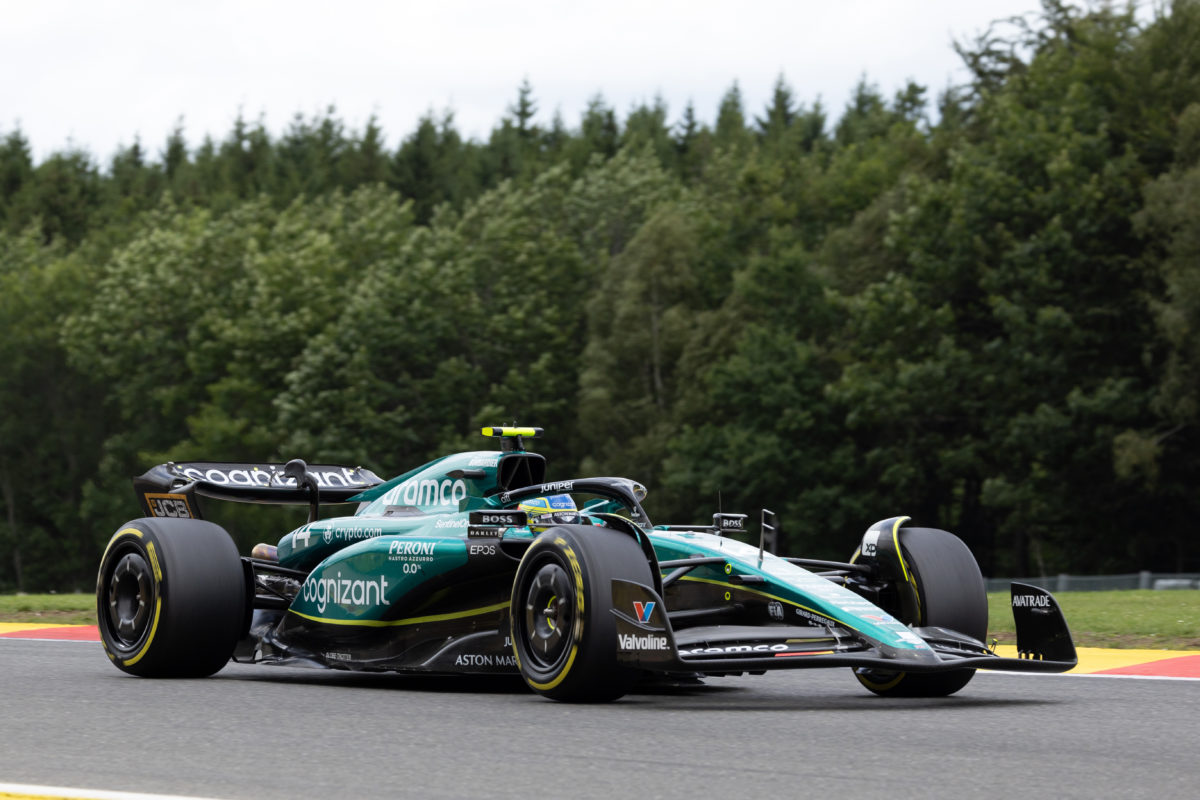
Aston Martin’s bid to return to the front in F1 has led to the team introducing a significantly upgraded new floor ahead of this weekend’s Dutch Grand Prix.
After starting the season as the second quickest team following a remarkable winter of development, Aston Martin had slid down the pecking order to fifth by the culmination of the first period of the season prior to the recent summer break.
Team principal Mike Krack acknowledged ahead of the last race in Belgium they had taken a wrong turn in terms of attempting to improve the car, but that it had an idea as to how redress the balance.
It has resulted in the latest floor, crucial to enhanced performance in the current ground-effect aerodynamic era, with the package including body, fences and edge.
Haas is another team to bring a major change with a new front wing and nose, its second iteration following an update introduced ahead of the Monaco Grand Prix in May.
The team claim that “the entire project has been revisited”, with “significant improvement obtained in the flow that is released behind the wing itself”.
McLaren has a new rear wing and beam wing assembly, whilst Red Bull, Mercedes, and AlphaTauri have brought minor updates.
The four other teams – Ferrari, Alpine, Alfa Romeo, and Williams – have no updates this weekend.
Red Bull
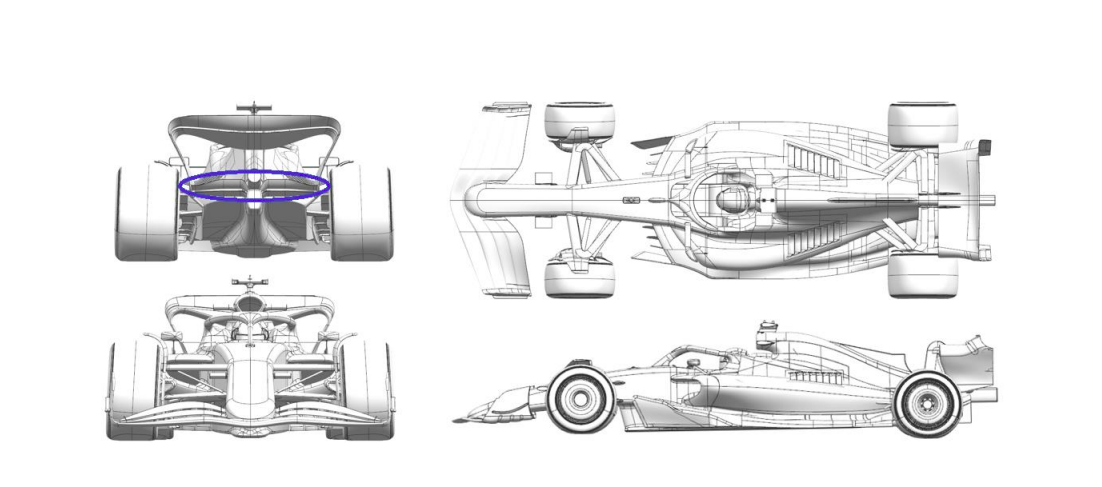
Red Bull RB19
| Updated component | Primary reason for update | Geometric differences compared to previous version | Brief description on how the update works |
| Beam wing | Performance – local load | Revised cambers and angles of incidence across the elements. | To better optimise the local geometry both the camber and angle of incidence have been subtly changed to improve the pressure distribution and improve wing performance. |
Mercedes
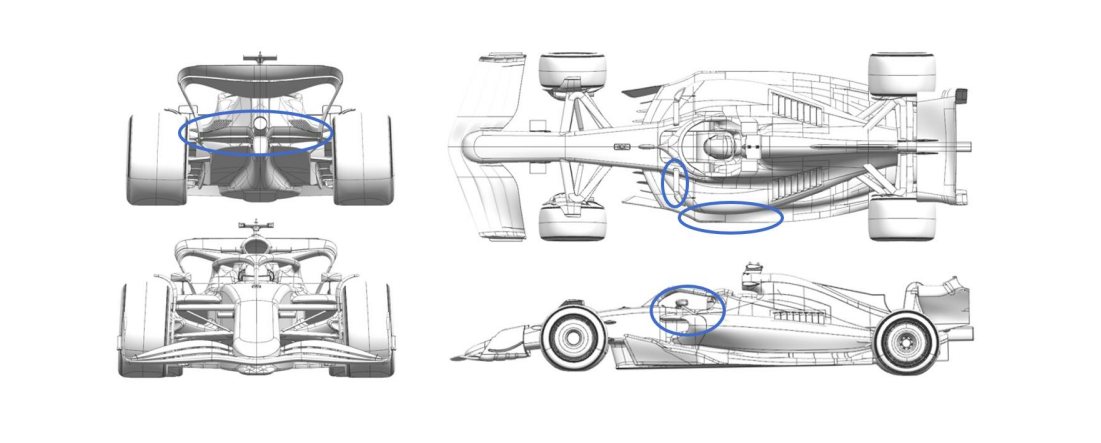
Mercedes W14
| Updated component | Primary reason for update | Geometric differences compared to previous version | Brief description on how the update works |
| Floor edge | Performance – flow Conditioning | Reduced span forward floor edge wing | Offloads the floor edge wing a little, which in turn reduces losses improving flow to the rear and increasing rear downforce. |
| Sidepod inlet | Performance – flow Conditioning | Decambered inboard mirror stay | Improved robustness of mirror stay through all conditions, improving flow quality to the rear of the car and increasing rear wing load. |
| Beam wing | Performance – local load | Increased element camber and chord | Increased element camber and chord increases beam wing local downforce (and drag) which in turn increases the rear floor load. |
McLaren
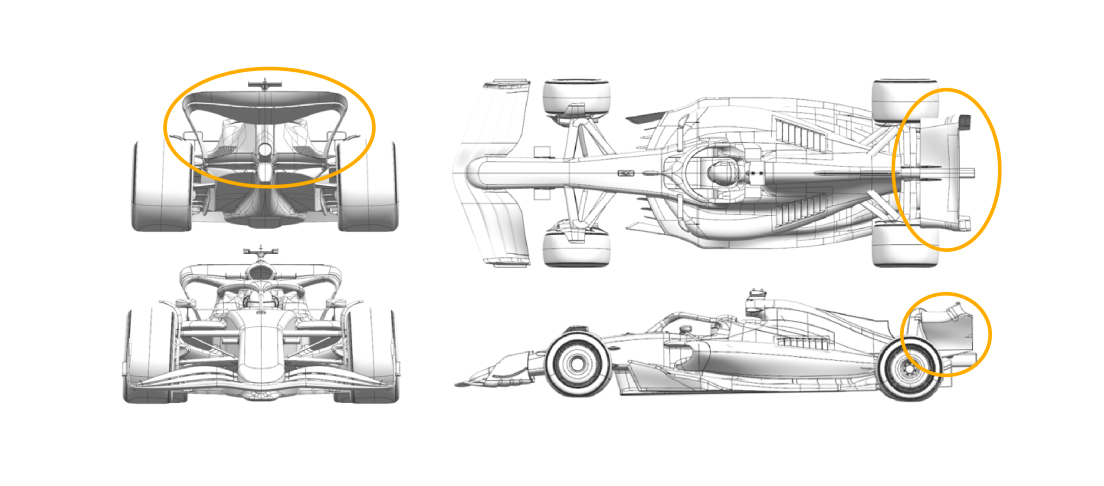
McLaren MCL60
| Updated component | Primary reason for update | Geometric differences compared to previous version | Brief description on how the update works |
| Rear wing | Circuit specific – drag range | New rear wing assembly | The new rear wing assembly features a completely new mainplane, flap and endplate which results in an increase in aerodynamic efficiency compared to the previous assembly covering the drag range suitable for this circuit. |
| Beam wing | Circuit specific – drag range | New beam wing assembly | New beam wing geometry which suits the aforementioned Rear Wing assembly to achieve an increase in aerodynamic efficiency at this drag range |
Aston Martin
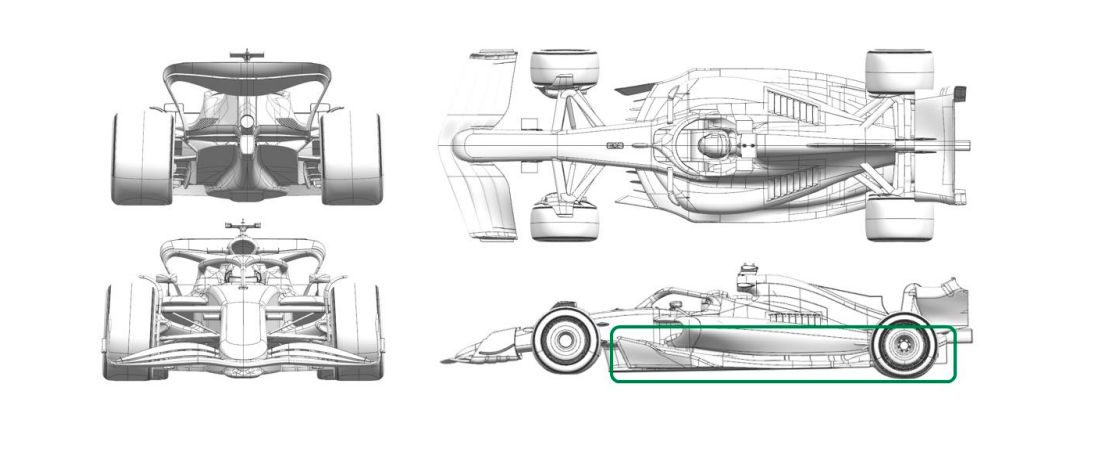
Aston Martin AMR23
| Updated component | Primary reason for update | Geometric differences compared to previous version | Brief description on how the update works |
| Floor body | Performance – local load | The lower surface of the floor has been modified to change the volume underneath the floor. | The package of floor modifications work in combination to improve local flow details and increase the load generated by the floor. |
| Floor fences | Performance – local load | The fences have been reshaped slightly in conjunction with the main body changes. | The package of floor modifications work in combination to improve local flow details and increase the load generated by the floor. |
| Floor edge | Performance – local load | The floor edge is the same concept but adjusted to suit the floor body modifications. | The package of floor modifications work in combination to improve local flow details and increase the load generated by the floor. |
| Diffuser | Performance – local load | The upper corner of the diffuser is modified to change the volume of the lower surface. A small winglet is also added behind the diffuser. | The package of floor modifications work in combination to improve local flow details and increase the load generated by the floor. |
Haas
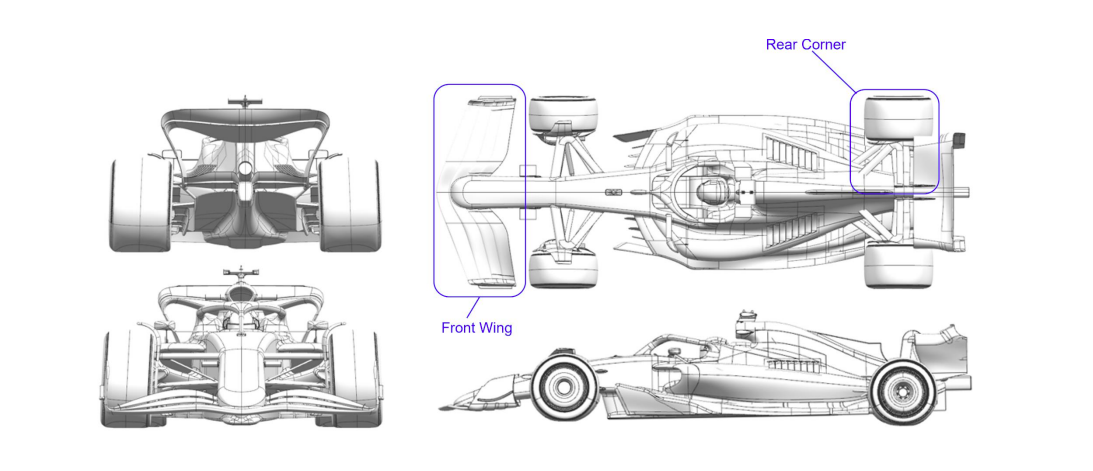
Haas VF-23
| Updated component | Primary reason for update | Geometric differences compared to previous version | Brief description on how the update works |
| Front wing | Performance – flow conditioning | A new arrangement of mainplane, flaps and the other component of the entire Front Wing is introduced for this race event. | Due to the experience gained with the FW introduced in Monaco, the entire project has been revisited. Significant improvement has been obtained in the flow that is released behind the wing itself. |
| Nose | Performance – flow conditioning | The development work has involved the car nose and specially the profile enclosed in the assembly | The nose tip, that in our car is merging into the second forward wing element, is part of the wing leading edge. The work is focused on the best compromise between the nose geometry and the wing profile itself. |
| Rear corner | Circuit specific – cooling range | Brake cooling has been improved with new internal ducts shape. | Inside the wheel rim the drum that is part of the brake cooling system, contain several ducts that has been optimized providing advantaged in the heat dissipation and aerodynamic efficiency. |
AlphaTauri
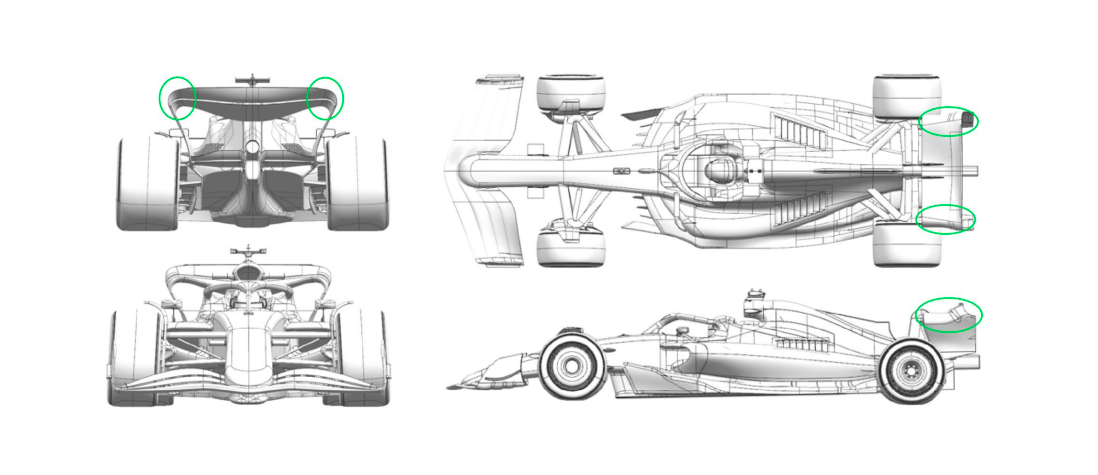
AlphaTauri AT04
| Updated component | Primary reason for update | Geometric differences compared to previous version | Brief description on how the update works |
| Rear wing endplate | Performance – local load | Relative to the previous geometry, the rear wing endplate junction with the rear wing elements has been updated. | The updated tips increase the efficiency of the assembly of this rear wing drag level, which is anticipated to be the best choice for this circuit based on lap time analysis. |






















Discussion about this post